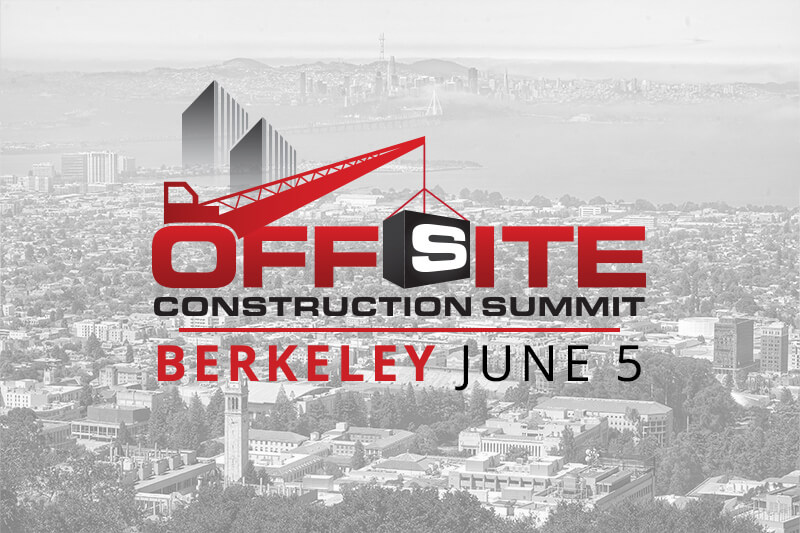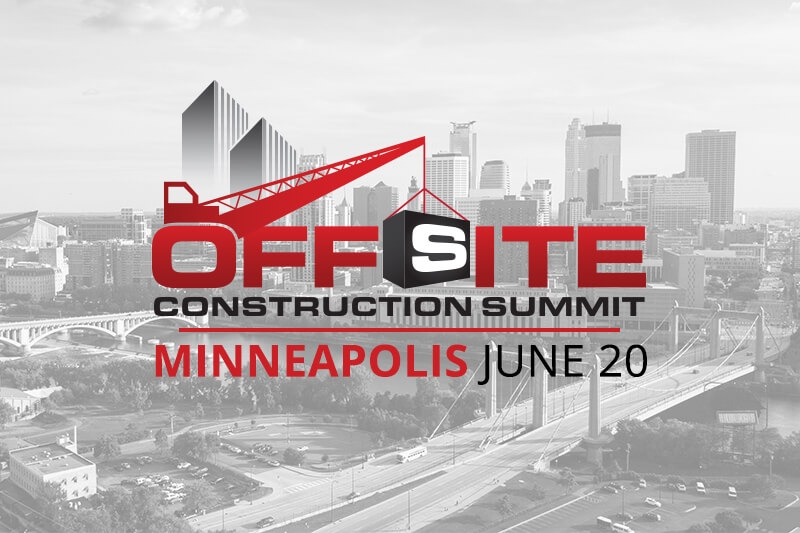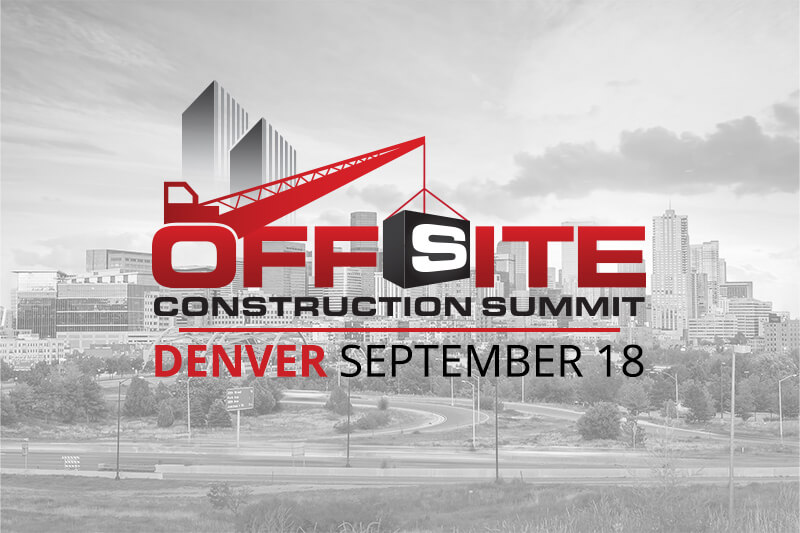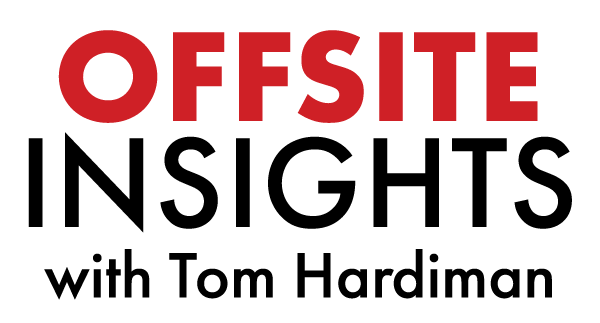
How One NYC Developer Cash Flows Projects Using Modular Construction
An interview with Aundre Oldacre, Managing Partner, AoRa Development.
Aundre Oldacre, managing partner at Brooklyn-based real estate acquisition & development firm AoRa Development, joins Tom Hardiman to discuss opportunities for modular construction and how developers can use modular to grow their business.
Transcript Interview
Tom Hardiman
Hello, and welcome to another edition of Offsite Insights. My name is Tom Hardiman. And I'm honored to have with me today Mr. Aundre Oldacre. Aundre is a real estate developer in the New York City and surrounding areas who has expressed an interest in modular and offsite construction. So welcome, Aundre, welcome to the show.
Aundre Oldacre
Thanks. Glad to be here.
Tom Hardiman
Hey, why don't we start off a little bit? Just tell us a little bit about who you are and your company and then maybe what got you interested in modular and offsite construction in the first place? Let's start with that.
Aundre Oldacre
All right, so Aundre Oldacre, Managing Partner of AoRa Development, a partner of a firm doing development in New York City area with my partner, Robert Allen. We started in early 2019, but I've been in real estate 16 years. I got my start buying and holding multifamily properties in the New York City area and decided to scale up in 2017 where I took Cornell's commercial real estate and Columbia's construction finance and learned the ins and outs of project management, asset management, underwriting quality takeoffs in the likes of pretty much everything, all things, commercial real estate, but also real estate development as well.
Tom Hardiman
Well, what, uh, you know, strong background there. But what what kind of made you lean towards, "let's check out this modular thing, let's check out offsite construction"?
Aundre Oldacre
Well, as you know, New York is probably one of the toughest markets to be in. The cost of construction here is approaching 400 a square foot with cost escalations in New York City. So we had to have find a way to have a competitive advantage with the tough deals, right? A lot of deals, don't pencil out here because the land price is too high, right? It's notoriously high and you have to find ways to either cut corners or be better than the competition or have better financing options.
Tom Hardiman
Okay, so was it a matter of strictly cost savings? Or was there some factor in...When you say pencil out? I'm assuming you mean, you can get in your building a little quicker?
Aundre Oldacre
Yes. A number of factors, obviously. Costs is one thing, but we're finding that the cost is pretty similar, but it's about getting in faster, right? We can get the building permit done a bit quicker as well. New York City has a pretty progressive plan when it comes to modular and approving. But the cost holdings, right? We, if we're doing a year, a two year development, we can shave 30% of that time off, which is holding costs that we can now both get back in finance costs and holding costs, but also in rent up and stabilization. So, we're able to pencil that in the in the model, and you know, show the savings.
Tom Hardiman
I'm a newbie here and there might be some others in terms of real estate development when penciling out cost? How far out are you trying to? Are you looking at five years? 10 years? Like where's your go? No, go like this was not going to work in 10 years, it's out or...can you give me some insights?
Aundre Oldacre
Yeah, I mean, different developers do different models are usually five or 10 years, we model for 10 years and look at the projections. We like to build with say like 20% more than we pay for the cost by year five, at least. And obviously, it has to hit a certain debt service coverage ratio for it to even be financed in the first place, which is usually 1.25. But in the New York City market, you can get down to 1.15. But we like to stick to that first number of 1.25 to be comfortable, because there will be cost overruns and other things that may happen.
Tom Hardiman
So obviously, if that two year development with no revenue comes in, you could get that down to 12-15 months, you start getting some revenue figures in there that helps the equation quite a bit, I imagine.
Aundre Oldacre
Absolutely.
Tom Hardiman
So that's obviously a big driver, New York City man, that's that's a tough market. But I will say this, you know, you know, it gets a lot of knocks for regulations. And you know, all that. You're right. New York City does have a very good modular program. The building department has been very progressive in that front.
Aundre Oldacre
It's encouraging to see they had a affordable project that they was mandatory to build it with modular, so it's encouraging to see that they're actually pushing the future of modular because right now we're at 4%. And in countries like Sweden, it's 70%. Right? So there's a reason why it's 70%. In Sweden and other progressive countries like Sweden, we need to get there, it can be a lot cheaper as we get closer towards manufacturing housing, and, and multifamily versus producing on the assembly line. And, and, and stick built, right? So I'm a big proponent of, you know, adding a lot of automation to these factories. So it's similar to a car manufacturer.
Tom Hardiman
So yeah, in places like New York City, and it's not unique to New York City, the housing problem is just a massive crisis, you know, we just can't build enough housing, particularly on that affordable kind of mid to lower income level to meet the need. So I think that's why we're seeing some cities and governments move more towards this direction.
Aundre Oldacre
So we have a nearly 300,000-unit shortage here in New York City. And it's the same in all the major cities. But, you know, obviously, we have a construction labor shortage, as well, which is driving the price and demand across the build up as well. That's why module is so important in fixing this problem.
Tom Hardiman
Yeah, we've got this perfect storm of labor shortage and high housing needs. And, you know, I don't think modular and offsite is going to solve the problem. But I think we could play a much bigger role in reducing that the number of housing units needed. So that's, that's good to hear. Good to hear. So Aundre, you've taken on a new role this year, and I'm quite familiar with this new role, you're in. Just some quick history for our viewers: Going back about 2013, I was involved with some other individuals to approach the National Institute of Building Science to create an Offsite Construction Council. And I was, you know, honored to be part of that board for the for the first several years. And now I understand you are the current chair of the Offsite Construction Council with the National Institute of Building Sciences, correct?
Aundre Oldacre
Yes, I have you to thank for the council and...
Tom Hardiman
Ha, thank or blame? So what are some of the things on the council's agenda for this year? I know, it's been hard to have any kind of meetings over these past couple of years. But what's in the hopper for you guys?
Aundre Oldacre
Sure. So during your tenure, you guys did the Fannie Mae toolkit. That's a standards and best policies and practices. We're looking to create an abridged version of that, like a one or two pager that people can quickly lead and get overall highlights of that Fannie Mae toolkit. We just had a big meeting with HUD and they're going to create a some research that should be coming out here this later this month. We're also looking to create a blog on the website that has lots of links to sites like MBI's, pertinent information about the modular industry from McKinsey and other reports that pertinent information about modular and show the many, many benefits from waste to speed and possibly cost, the cost certainty, to safety, less waste...show all the many benefits versus the fewer cons of modular.
Tom Hardiman
Yeah, and a lot of people don't realize there's been some great resources that really generated and came out of this Offsite Construction Council. We've got a lot of those posts that you mentioned, the Fannie Mae lenders toolkit. There was a design guide for architects that the council worked on with AIA and that's out there now. So a lot of good tools and resources out there and sounds like some more on the way from from the Offsite Construction Council.
Aundre Oldacre
Sure. I mean, it's about the education right. We're research and education. A lot of banks and local municipalities and lenders they just don't understand...and specifically the developers, right? They usually look at cost as the first driver. If you're telling them it's not going to be cheaper than what why am I changing my role, right? Like why am I gonna go you know, stop what I'm doing that's making me money, you know, day in and day out to go learn something new that may or may not cost to save me money? But in actuality it will save you money with cost savings only with time and cost certainty savings, but at the very least, and we think that eventually as we get further mature into the modular cycle, that it will be a cost savings.
Tom Hardiman
Yeah, we're we've run into that all the time that status quo is the devil I know. You know, "I'm doing all right doing it this way. Why should I try this modular and offsite thing?" But you know, all the reasons you mention earlier: labor shortages, high housing costs, high housing needs, material waste reduction. They're going to have to...I think developers and contractors are going to have to start moving in this direction, to a much greater extent than they have been.
Aundre Oldacre
Absolutely.
Tom Hardiman
So what do you see on for your company on the horizon in 2022? Are we are we staying busy?
Aundre Oldacre
Yes. So we're looking at a couple of retrofit deals here in New York City. We have 138 unit; we're looking at a smaller deal 18 unit development. But we have a huge 1500 unit deal. That would be multi-phase in right outside of New York City that we're looking at. We have equity and interest. And we're looking to use PACE, which is Property Assessed Clean Energy to help leverage that asset and make it a much stronger IRR for returns for our investors. We're looking at a few other smaller deals. But you know, those are our main deals that we're looking at right now. And we're getting close on the 1500 unit; we have strong interest from the equity player.
Tom Hardiman
Sounds like it's gonna be a busy year for you, Aundre.
Aundre Oldacre
Absolutely.
Tom Hardiman
Well, that's, that's fantastic. Well, I want to thank you for sharing your insights with us today. That was just a little taste of what Aundre does every day. And you know, he's been a big proponent of modular and offsite. We've got a long way to go. But with people like Aundre, helping push us in that direction, you know, I see great things on our industries horizon as well. Aundre, I appreciate you joining me today and looking forward to working with you in the future.
Aundre Oldacre
Absolutely. Thanks, Tom.
Tom Hardiman
Well, thank you. And stay tuned for another episode of Offsite Insights. And be sure to check out our website for all those resources Aundre referenced. Thank you!
Don't Miss Our Upcoming Events!
Join the leading companies and professionals from across the offsite construction industry at each of this year's Offsite Construction Network events. With summits and expos taking place across North America in 2024, it's never been easier to connect with and learn from offsite construction manufacturers, designers, builders, and suppliers from the United States and Canada.
Subscribe today to get the latest updates on these and future events from the Offsite Construction Network.
